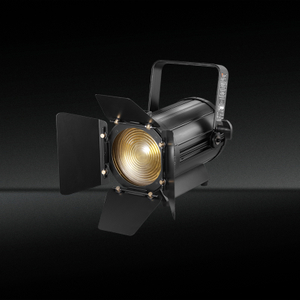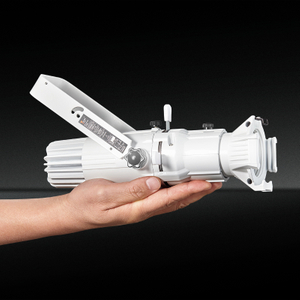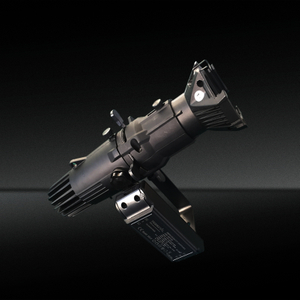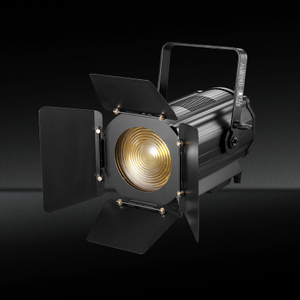What is the difference between micro LED and mini LED lights?
Views: 0 Author: Site Editor Publish Time: 2025-07-31 Origin: Site








In recent years, the evolution of display technology has brought about two major players in the LED lighting industry: Micro LED and Mini LED. Both technologies represent significant advancements in lighting and display applications, offering benefits such as superior color accuracy, increased brightness, and better energy efficiency. But despite their similarities, Micro LED and Mini LED have distinct differences in terms of size, application, and performance. This article will explore these differences, providing a comprehensive guide to understanding both technologies.
What is Micro LED Technology?
Micro LED technology refers to a type of self-emissive display technology that uses microscopic LEDs to create pixels on a screen. Unlike traditional LED or LCD displays, which require a backlight, Micro LED panels generate their own light at the pixel level. This means that each pixel is a tiny LED that can be turned on or off individually, leading to perfect blacks and exceptional contrast ratios.
Key Features of Micro LED:
Self-emissive Technology: Each micro LED pixel emits its own light, resulting in greater brightness, better contrast, and more vibrant colors.
Smaller Pixel Size: Micro LED displays consist of tiny, microscopic LEDs that are smaller than those in traditional LED displays, leading to higher pixel density.
Higher Brightness: Micro LED displays are known for their ability to achieve very high brightness levels without compromising image quality.
No Burn-in Issues: Unlike OLED displays, Micro LED screens do not suffer from burn-in, making them a more durable option.
Scalability: Micro LED panels are modular and can be seamlessly combined to form large displays, making them ideal for large-scale screens, digital signage, and TV applications.
Micro LED is often used in applications where high brightness and color accuracy are crucial, such as televisions, digital signage, and large-scale displays in commercial environments. The technology has the potential to revolutionize the way we experience visual content due to its flexibility, brightness, and sharpness.
What is Mini LED Technology?
Mini LED technology is a form of LCD (Liquid Crystal Display) that uses smaller LEDs for backlighting. While traditional LCDs use larger LEDs for backlight, Mini LED utilizes significantly smaller LEDs to create better control over the backlight, resulting in improved contrast, brightness, and color accuracy. Mini LEDs are typically used in LCD screens and work in conjunction with local dimming zones to enhance the picture quality.
Key Features of Mini LED:
Smaller LED Size: Mini LEDs are smaller than traditional LEDs, typically ranging from 100 to 200 microns in size, which allows for better control over the lighting.
Improved Backlight Control: Mini LED technology offers better local dimming capabilities by using more precise control over the LEDs behind the LCD panel, leading to improved contrast and deeper blacks.
Enhanced Brightness: Mini LED displays can achieve higher peak brightness compared to traditional LED-backlit LCDs, which is especially useful for HDR (High Dynamic Range) content.
Better Color Accuracy: With finer backlight control, Mini LED technology allows for more accurate color reproduction, making the image sharper and more vibrant.
Mini LED is often used in high-end televisions, monitors, and other consumer electronics, offering an improved LCD experience compared to conventional LED technology. It is a step toward bridging the gap between traditional LED technology and newer, self-emissive displays like OLED and Micro LED.
Micro LED vs Mini LED: Key Differences
While Micro LED and Mini LED are both advanced lighting technologies that improve the performance of displays, they have key differences that make each suitable for specific applications.
1. Technology Type:
Micro LED: Micro LED is a self-emissive display technology, meaning each pixel is an individual light-emitting diode. This allows for precise control over each pixel's brightness, resulting in better contrast and deep blacks.
Mini LED: Mini LED, on the other hand, is an enhancement of traditional LED-backlit LCD technology. It uses smaller LEDs for backlighting, improving local dimming and allowing for better contrast in LCD displays.
2. Display Type:
Micro LED: Micro LED is used in self-emissive displays, meaning each pixel generates its own light. It is a direct competitor to OLED technology and is used in high-end televisions, digital signage, and large displays.
Mini LED: Mini LED is used primarily in LCD displays and serves as a backlight technology. It improves the performance of LCDs by offering better contrast and brightness, making it ideal for high-end monitors and televisions.
3. Brightness and Contrast:
Micro LED: Micro LED technology offers superior brightness and contrast due to its self-emissive nature. Since each pixel is individually lit, it can achieve perfect blacks and superior contrast ratios.
Mini LED: Mini LED improves the brightness and contrast of traditional LCD displays by enhancing the backlight system with smaller LEDs. While it offers better performance than traditional LEDs, it cannot achieve the same level of contrast as Micro LED.
4. Pixel Size and Density:
Micro LED: Micro LED displays are made up of tiny micro LEDs, which results in extremely high pixel density. This makes Micro LED ideal for applications that require very high resolution, such as large-scale displays and ultra-high-definition televisions.
Mini LED: Mini LED displays use smaller LEDs than traditional LEDs, but the pixel density is still lower than that of Micro LED displays. This results in a lower resolution compared to Micro LED, but still significantly better than traditional LED-backlit LCDs.
5. Cost:
Micro LED: Micro LED displays are still relatively expensive due to the complex manufacturing process and the high cost of producing individual micro LEDs. They are typically found in high-end, large-scale applications such as digital billboards and luxury televisions.
Mini LED: Mini LED technology is more affordable than Micro LED because it is still based on the LCD platform. However, it offers significant performance improvements over traditional LED-backlit LCDs, making it a cost-effective solution for high-end displays.
6. Durability:
Micro LED: Micro LED displays are extremely durable since they do not suffer from issues like burn-in that can affect OLED displays. This makes them more suitable for long-term use, especially in commercial and public display applications.
Mini LED: While Mini LED displays are generally durable, they still rely on LCD technology, which can suffer from issues like backlight bleed and uneven brightness.
Use Cases for Micro LED and Mini LED
Both Micro LED and Mini LED technologies offer distinct advantages depending on the use case.
Micro LED Use Cases:
Large-Scale Displays: Micro LED's modular design allows it to be used in massive video walls, stadium displays, and digital billboards.
High-End TVs: As the technology becomes more affordable, Micro LED is expected to revolutionize the consumer TV market with ultra-high-definition displays.
Professional Displays: Micro LED is ideal for professional and commercial settings that require high brightness, color accuracy, and durability.
Mini LED Use Cases:
Premium LCD TVs: Mini LED is used to enhance the performance of high-end LCD TVs, providing better contrast and brightness for HDR content.
Monitors: Mini LED technology is often found in premium computer monitors, offering improved picture quality for professional design work, gaming, and video editing.
Smartphones and Tablets: Some of the latest smartphones and tablets use Mini LED technology to improve display quality, especially for HDR content.
FAQs
1. What is the main difference between Micro LED and Mini LED?
The main difference between Micro LED and Mini LED is that Micro LED is a self-emissive display technology where each pixel emits its own light, while Mini LED is an enhanced backlight technology for LCDs that uses smaller LEDs to improve brightness and contrast.
2. Is Micro LED better than Mini LED?
Micro LED generally offers better performance than Mini LED due to its self-emissive nature, allowing for perfect blacks, higher brightness, and better contrast. However, Micro LED is more expensive and used in high-end applications, whereas Mini LED is more affordable and used in premium LCD displays.
3. Can Micro LED displays suffer from burn-in?
No, Micro LED displays do not suffer from burn-in issues like OLED displays. Since each pixel is independently controlled, there is no risk of permanent image retention.
4. Is Mini LED worth the upgrade?
If you are upgrading from a traditional LED or an older LCD TV, Mini LED can offer significant improvements in brightness, contrast, and color accuracy, making it a worthwhile upgrade for those seeking a better display experience without the cost of OLED or Micro LED.
5. Which technology is more affordable, Micro LED or Mini LED?
Mini LED is more affordable than Micro LED, as it is based on an enhanced LCD backlight system, while Micro LED is a more advanced self-emissive display technology that is still relatively expensive.
Conclusion
In summary, both Micro LED and Mini LED are innovative technologies that have significantly enhanced the display industry. While Micro LED provides superior contrast, brightness, and pixel density with its self-emissive design, Mini LED offers a more affordable solution to improve the performance of traditional LCD displays. The choice between the two depends on your specific needs, budget, and the type of display you are looking for. As these technologies continue to evolve, we can expect even more exciting advancements in the world of LED lighting and displays.






